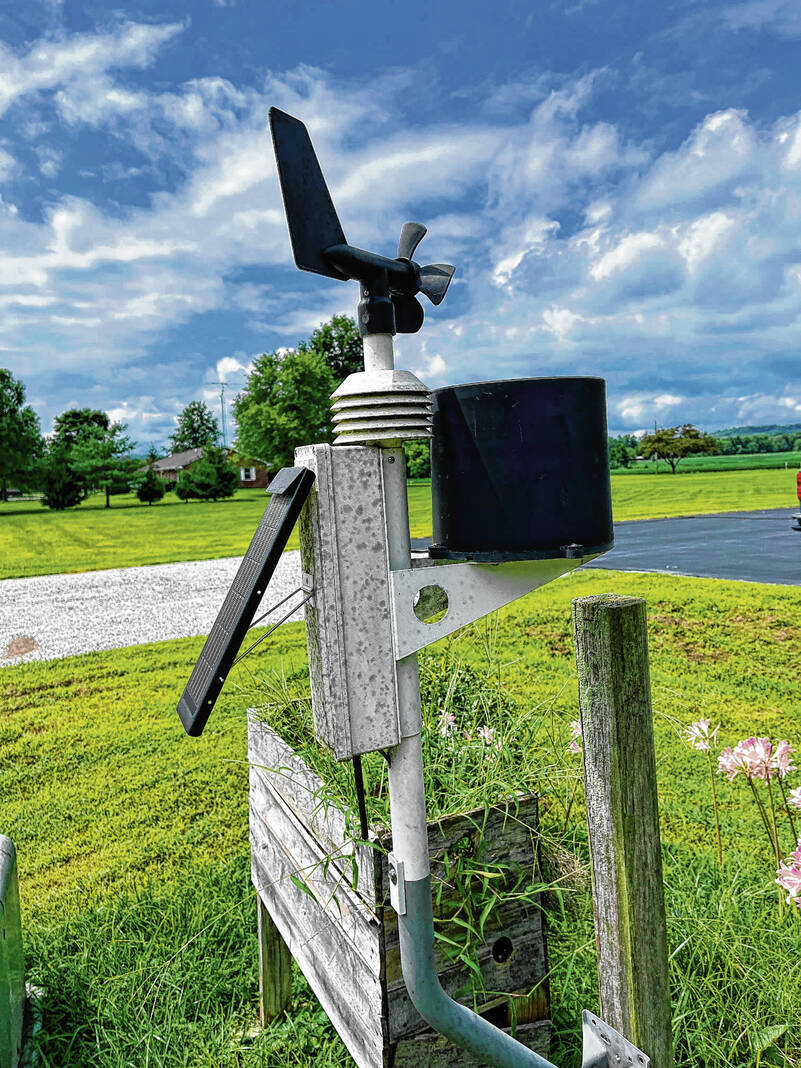BROWNSTOWN — A weather station that had been operating from the roof of Brownstown Central High School since 1989 recently found a new home several miles southeast of the county seat.
Retired high school teacher Barry Cutter oversees the weather station and receives IT support from Brownstown native Dusty Deckard, who graduated from Brownstown Central High School in 2014 and later earned a degree from Purdue University.
The weather reports generated from the station can be viewed at jacksoncountyweather.com:47220. Reports are updated every 5 minutes, and new radars are uploaded every 10 minutes. Every hour, a radar is uploaded with temperature readings.
Cutter, who taught at Brownstown Central High School for 40 years before retiring in May, built the weather station in 1989 as a project with his earth science class.
Meteorology is a passion for Cutter, and he said he has always enjoyed learning about it more than other scientific disciplines such as geology, astronomy and oceanography.
When the weather station was first built, he ran off of an Apple IIe computer that would print out weather reports every 5 minutes.
Now, anyone with access to the internet can go to Cutter’s website and see weather reports that are frequently updated using data obtained from the locally placed weather station.
“It’s local, accurate and up-to-date within 5 minutes,” Cutter said.
Over the last few years Cutter taught at BCHS, he said his students all had laptops, so he was able to conduct earth science lessons where the students could analyze reports from the weather station together.
While there has been a weather station on top of BCHS for the majority of Cutter’s teaching career, he said the current one is either the third or fourth weather station device because of equipment upgrades.
The weather station now resides at a location between Tampico and Wegan.
Since the weather station was moved from an urban area in town to a rural area in the country, Cutter said it has been getting cool faster, and he felt like the weather reports are slightly more accurate.
Another factor helping the weather station’s accuracy is that it’s now 5 feet off of the ground, which is the recommended height for optimal accuracy.
Cutter said barometer and wind speed readings will be accurate for any part of the county, but the rainfall count can vary by location.
On days that are particularly hot, sometimes rainfall is counted when it’s not going to rain.
Cutter said that is due to ground virga, precipitation that evaporates before reaching the ground.
Because the weather station was originally installed at the high school, Cutter said he decided to put it on the roof since it would be more likely to be vandalized if it was closer to the ground.
“All of the instruments are professional grade, and it does a really nice job,” he said.
Progression in technology over the years has made running the weather station more convenient, Cutter said.
When there would be a power outage, someone would normally have to drive to the weather station to reboot the computer that was running it.
Now, technology is in place for Cutter or Deckard to be able to remotely restart the computer and input commands.
Cutter said he has weather reports from the forestry in Brownstown from 1890 up to 1956, and he plans on looking through them this winter.
If anyone is interested in seeing those weather reports, Cutter may be reached via email at [email protected].


